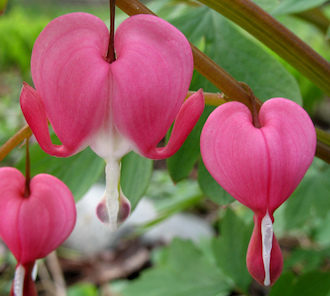Product Description
Eugene Fontenay (1823-1887) “Wisteria” brooch and fitted with original pendant attachment in 18k gold with extremely fine detailing, marked, c.1875, matching French open wirework long necklace in 18k gold



Eugene Fontenay (1823-1887) “Wisteria” brooch and fitted with original pendant attachment in 18k gold with extremely fine detailing, superb granulation and hanging pendant blossoms, marked: EF in a diamond poincon (the mark of Eugene Fontenay), French Eagle’s head touchmark for 18k gold (2x), c.1875
Length of pendant: 3 and 3/8 inches x width: 1 and ½ inches
Weight: .60 Troy ounce / 18.6 grams / 11.9 pennyweights
Matching French open wirework long necklace in 18k gold with fine detailing and delicate beadwork details, marked: TM in a diamond poincon (maker’s mark and possibly that of Michel Tricaud), French eagle’s head touchmark for 18k gold (3x), c.1875
Length: 58 inches long x width: 3/8 inches
Weight: 2.01 Troy ounces / 62.7 grams / 40.3 pennyweights
Pendant and necklace combined weight: 2.61 Troy ounces / 81.2 grams / 52.3 pennyweights
Nineteenth century French goldsmith Eugène Fontenay (1823-1887) was born into the profession, with a family name long known for their skills as goldsmiths. Fontenay opened his own studio in 1847 after apprenticing with Marchand and working for the Parisian jeweler Dutreih. Influenced by the archeological revival style of the period, a response to the Campana Collection of classical jewels, brought to France in 1861. Fontenay became an author as well, and published books including “Les Bijoux Anciens et Modernes” in 1887, after selling his workshop.
Eugene Fontenay (1823-1887) “Wisteria” brooch and fitted with original pendant attachment in 18k gold with extremely fine detailing, marked, c.1875, matching French open wirework long necklace in 18k gold
JOHN GUTMANN (1905-1998) USA
D.O.S. Apology 1938
Signed: 290.6, M 3 (in a circle), 5, © John Gutmann, SP, D.O.S. Apology 1938 (all in pencil on back of photo)
Framed size: H: 12 1/8“ x W: 14 3/8”
John Gutmann was a German-born American photographer and painter. After fleeing Nazi Germany to the United States, Gutmann acquired a job as a photographer for various German magazines. Gutmann quickly took an interest in the American way of life and sought to capture it through the lense of his camera. He especially took an interest in the Jazz music scene. Gutmann is recognized for his unique “worm’s-eye view” camera angle. He enjoyed taking photos of ordinary things and making them seem special.His work was shown in important galleries such as Castelli’s in NYC, Fraenkel in San Francisco, and the Centre National de la Photographie in Paris. After his death, Gutmann’s oeuvre was given to the Center for Creative Photography at the University of Arizona.
